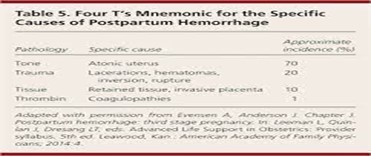The nurse is preparing discharge instructions for a stable patient with a placenta previa. Instructions should include all of the following except:
Return to the hospital at onset of next bleeding episode
Strict bedrest
Pelvic rest until delivery
Resources for online support groups
The Correct Answer is B
Bedrest is no longer recommended as it does not improve outcomes and may increase the risk of complications such as thromboembolism and pneumonia. Instead, patients with a placenta previa should be advised to avoid activities that may increase pelvic pressure, such as sexual intercourse, heavy lifting, and strenuous exercise. The other options are appropriate instructions to include in the patient's discharge plan.
Nursing Test Bank
Naxlex Comprehensive Predictor Exams
Related Questions
Correct Answer is D
Explanation
The most common cause of excessive blood loss after childbirth is the failure of the uterine muscle to contract firmly, which is also known as uterine atony. If the uterus does not contract effectively after delivery, it cannot properly close off the blood vessels that were connected to the placenta, leading to heavy bleeding. Uterine atony can occur due to various factors, such as prolonged labor, multiple births, or the use of certain medications during labor.
Other causes of excessive blood loss after childbirth include retained placental fragments, vaginal or vulvar hematomas, or unrepaired lacerations of the vagina or cervix, but these are less common than uterine atony.

Correct Answer is C
Explanation
A CS4 who has had three prior lower transverse cesarean sections is at the highest risk for uterine rupture. The risk of uterine rupture increases with each subsequent cesarean section, and a history of three or more prior lower transverse cesarean sections is considered a significant risk factor for uterine rupture.
Whether you are a student looking to ace your exams or a practicing nurse seeking to enhance your expertise , our nursing education contents will empower you with the confidence and competence to make a difference in the lives of patients and become a respected leader in the healthcare field.
Visit Naxlex, invest in your future and unlock endless possibilities with our unparalleled nursing education contents today
Report Wrong Answer on the Current Question
Do you disagree with the answer? If yes, what is your expected answer? Explain.
Kindly be descriptive with the issue you are facing.
